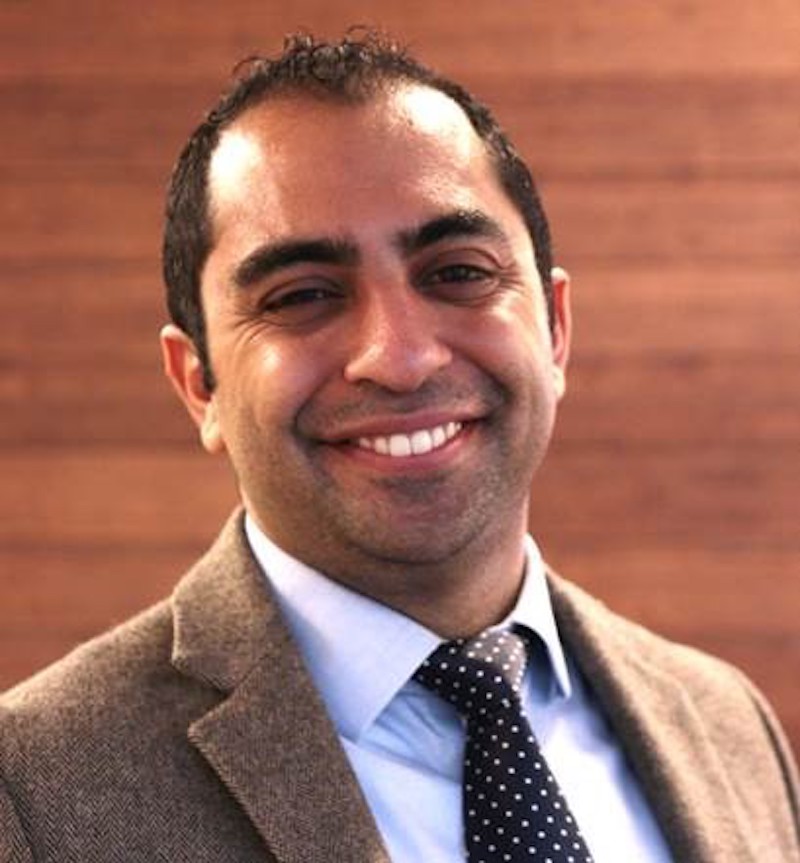HOK, the global design firm whose healthcare practice has planned and designed numerous healthcare facilities, has appointed Andrew M. Ibrahim, a medical doctor whose education included architectural training, as its chief medical officer.
Ibrahim, MD, MSc., is a resident surgeon at the University of Michigan, and serves on AIA’s Design and Health Leadership Group. While at Case Western Reserve University, where he received his undergraduate and medical degrees, Ibrahim took a year of coursework at London’s Bartlett School of Architecture.
He has also received training in healthcare delivery and policy as a Crile Fellow at Princeton University, a Doris Duke Fellow at Johns Hopkins Hospital, and as a Robert Wood Johnson Clinical Scholar at Michigan.
HOK claims to be one of the first AEC firms to hire a chief medical officer. (According to his LinkedIn page, Ibrahim has been HOK’s chief medical officer since February, although the company only released that news yesterday.) “In an era of hospital megamergers and value-based care, Dr. Ibrahim’s expertise in healthcare policy and clinical innovation will be instrumental in helping our teams guide clients through how vertical and horizontal integrations can positively affect patient care,” says Anthony Roesch, AIA, director of HOK’s global Healthcare Consulting group.
Ibrahim will use his expertise in surgery, architecture and clinical care delivery models to collaborate with HOK’s teams of medical planners, designers, and consultants.
“My experience has taught me that everything we build and design—schools, stadiums, airports, skyscrapers—has enormous potential to improve population health and wellness. As such, I deliberately collaborate across a breadth of academic and private sectors,” Ibrahim wrote on the website surgeryredesign.com. where he highlights his academic research and writing.
Related Stories
Architects | Apr 5, 2018
AIA grants $100,000 to four Upjohn Research Initiative projects
The purpose of the grant is to provide base funds for applied research projects that will advance the design profession’s knowledge and practice.
Architects | Apr 5, 2018
Tech Report 5.0: The Human Touch
Can studying humans at a behavioral level produce better buildings? Cognitive architecture experts are working to find out.
Architects | Apr 4, 2018
How to acquire speaking engagements and hone your skills
So, you understand the benefits, but how do you actually get started with speaking engagements?
Architects | Apr 4, 2018
8 things to consider before using digital media to communicate with employees
The Marlin Company, a visual communications and digital signage provider, published a guide that outlines eight basic questions, along with some advice, about workplace digital signage.
Education Facilities | Mar 30, 2018
How can we design safer schools in the age of active shooters?
How can we balance the need for additional security with design principles that foster a more nurturing next-generation learning environment for students?
Architects | Mar 26, 2018
Designing for homeless facilities: Critical spaces to consider
The City of San Diego is home to the fourth largest homeless population in the U.S.
Education Facilities | Mar 23, 2018
An introvert's oasis: How to create learning environments for all student types
In order to understand why a school day can be so grueling for an introverted student, it’s important to know what it means to be introverted, writes NAC Architecture’s Emily Spiller.
Architects | Mar 22, 2018
The benefits and nuances of integrated design
Achieving integrated design usually means operating under a strong relationship.
Architects | Mar 14, 2018
Becoming nature: The building design evolution meets the living building revolution
With the environmental movement, sustainability became a marker of innovation in design for the built environment.
Office Buildings | Mar 12, 2018
Sound advice on workplace design
Thoughtful design, paired with a change management program to educate staff, can both enhance connectivity and minimize distractions.
















